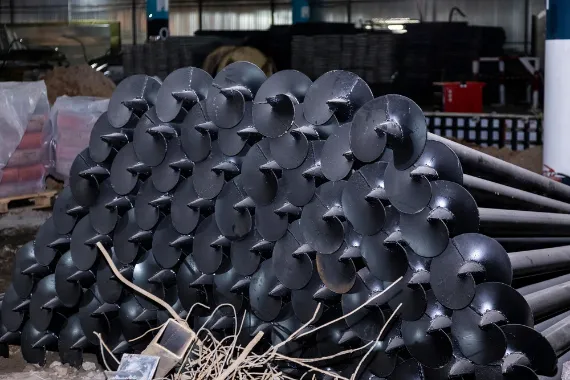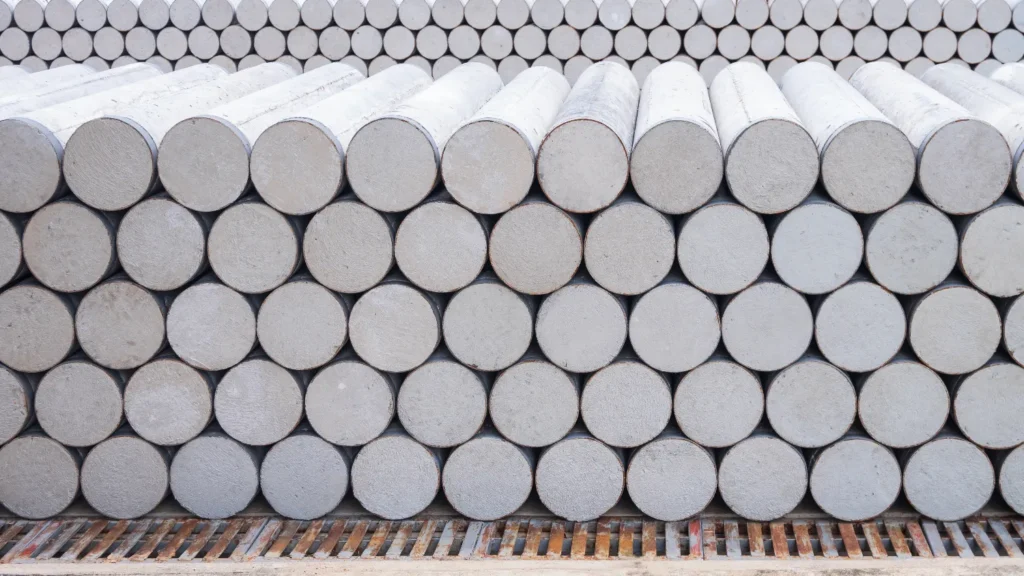Helical Piles vs. Micropiles: Choosing the Right Solution for Your Project
When it comes to foundation stabilization, both helical piles and micropiles offer strong solutions, but choosing the right one depends on your project’s specific needs. While each serves a similar purpose in providing foundational support, their design, installation process, and ideal applications differ significantly. For property owners and contractors, understanding which system is best for your particular project can mean the difference between long-term stability and ongoing foundation issues.
In this article, we’ll break down the key differences between helical piles and micropiles, discuss their benefits, and help you determine which is the right solution for your foundation needs.
Contact Us Today to Learn Which Foundation Solution Is Right for Your Project—Helical Piles or Micropiles.
What Are Helical Piles?
Helical piles are deep foundation elements that are screwed into the ground using large, helical-shaped blades. These blades allow the piles to twist deep into the soil, creating strong support for structures above. Helical piles are designed to transfer the weight of the building or structure to stable soil or bedrock beneath the surface, making them an excellent choice for areas where the top layers of soil are weak or unstable.
Here are the benefits of helical piers:
Advantages of Helical Piles:
- Quick Installation
- Minimal Disruption
- Cost-Effective
- Load-Bearing Capacity
- Removable and Reusable

What Are Micropiles?
Micropiles are small-diameter, high-strength steel-cased piles that are drilled deep into the ground to provide foundational support, particularly in areas with challenging soil conditions or restricted access. Unlike helical piles, micropiles are drilled into place and then grouted, which allows them to penetrate dense, rocky, or hard soil where other foundation systems might not be feasible. Learn more about micropiles in our blog, What Are Micropiles?“
Here are some of the benefits of micropiles:
Advantages of Micropiles:
- Versatility in Challenging Conditions
- High Load Capacity
- Minimal Site Impact
- Flexible Design
- Long-Term Durability

Helical Piles vs. Micropiles: Key Differences
Though both helical piles and micropiles are used to stabilize foundations, their designs, installation methods, and ideal use cases vary significantly. Understanding these differences is essential when choosing the right foundation solution for your project.
- Installation Process: Helical piles are screwed into the ground using helical blades, which makes installation faster and less invasive. In contrast, micropiles are drilled and grouted into place, allowing them to penetrate harder, denser soils.
- Load Capacity: Helical piles are suitable for projects with moderate to high load requirements, such as residential or light commercial buildings. Micropiles, on the other hand, are capable of supporting extremely high loads, making them ideal for large, heavy structures like high-rise buildings or bridges.
- Soil Conditions: Helical piles perform well in soft to moderate soils, making them a good fit for areas with weaker ground layers. In contrast, micropiles excel in rocky, hard, or dense soils where drilling is necessary for deep penetration.
- Site Access: Micropiles are often the best solution for sites with limited space or difficult access, such as urban areas or steep slopes. Helical piles, however, are more efficient in open spaces where quick installation is key.
Each system has its strengths, and selecting the right one depends on your project’s specific needs, from soil type to load-bearing requirements.
When to Use Helical Piles vs. Micropiles
The choice between helical piles and micropiles depends on various factors, including site conditions, load requirements, and project constraints. Each foundation type is suited for different scenarios, and selecting the right one can ensure long-term stability and efficiency. Below you’ll find some information on when to use helical piers vs micropiles for your project.
| Use Helical Piles When | Use Micropiles When |
|---|---|
| The project requires quick installation with minimal site disturbance. | The soil is rocky, dense, or challenging to penetrate, where drilling is necessary. |
| The soil is soft to moderately firm and can support helical pile penetration. | The site has restricted access or limited space for larger equipment, such as in urban areas or tight spaces. |
| The site is open with plenty of access for installation equipment. | The structure has extremely high load requirements, like large commercial buildings, industrial facilities, or bridges. |
| The load requirements are moderate to high, making them suitable for residential or light commercial projects. | The project involves slope stabilization or repairing an existing foundation in difficult soil conditions. |
Factors to Consider When Choosing Between Helical Piles and Micropiles
When deciding between helical piles and micropiles, it’s important to consider site-specific conditions and project goals. Each foundation solution offers distinct advantages, and the right choice depends on several critical factors. By evaluating the following considerations, you can determine which system is best suited for your project’s unique needs.
Key Factors to Consider:
- Soil Conditions: Evaluate the type of soil on the site by conducting a geotechnical investigation. Helical piles are ideal for soft to moderately firm soils, while micropiles excel in rocky, hard, or dense soils where drilling is required for deeper penetration.
- Load Requirements: Consider the weight your foundation needs to support. Micropiles are better suited for extremely heavy loads, such as large commercial buildings or industrial structures, whereas helical piles can handle moderate to high loads, making them ideal for residential or light commercial projects.
- Site Access: If your site has restricted space or access issues, micropiles may be the best option, as they require smaller equipment for installation. Helical piles, however, are more efficient in open areas with easy access for machinery.
- Time Constraints: Helical piles can be installed quickly, making them a better choice for projects with tight deadlines. Micropiles, due to the more complex drilling process, may take longer.
- Cost: Assess your budget. Helical piles tend to be more cost-effective for smaller or moderate-scale projects, while micropiles are a better choice for large-scale builds that require deep, heavy-load support.
- Environmental Sensitivity: If your project is in an environmentally sensitive area or close to existing structures, micropiles cause less vibration and disturbance during installation compared to helical piles.
Need help choosing between helical piles and micropiles? Contact us to get expert advice tailored to your project.
Final Thoughts on Helical Piles vs. Micropiles
Both helical piles and micropiles are highly effective foundation solutions, but the best choice depends on your site conditions, load requirements, and overall project scope. Helical piles offer quick installation and are ideal for projects with moderate to high loads, while micropiles provide superior performance in difficult soils and high-load scenarios. At Piers and Piles, we know that choosing the right foundation system is crucial to ensuring long-term stability and success for your project. That’s why we offer free assessments for Long Island, Brooklyn, and Queens projects. If you want a free expert opinion, just reach out by clicking the button below and we’ll be in touch!